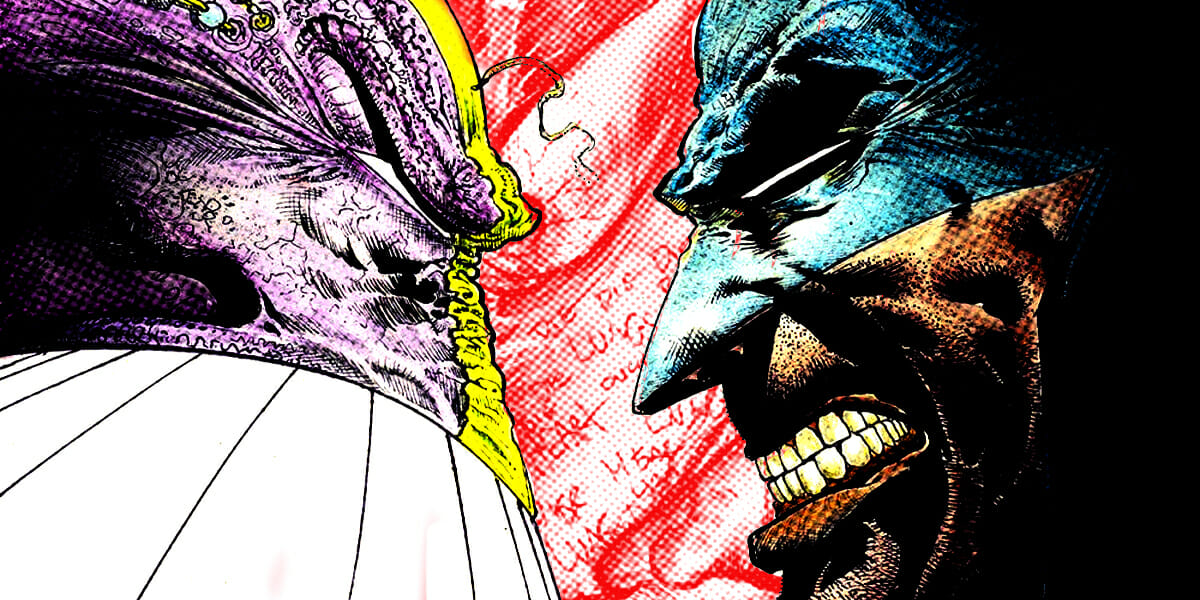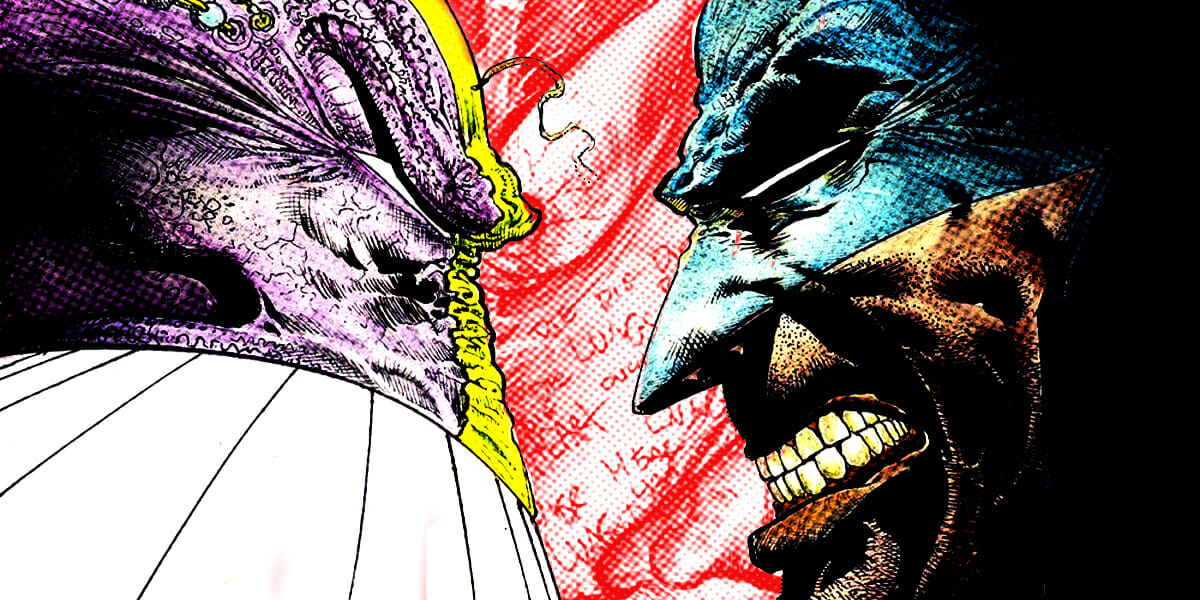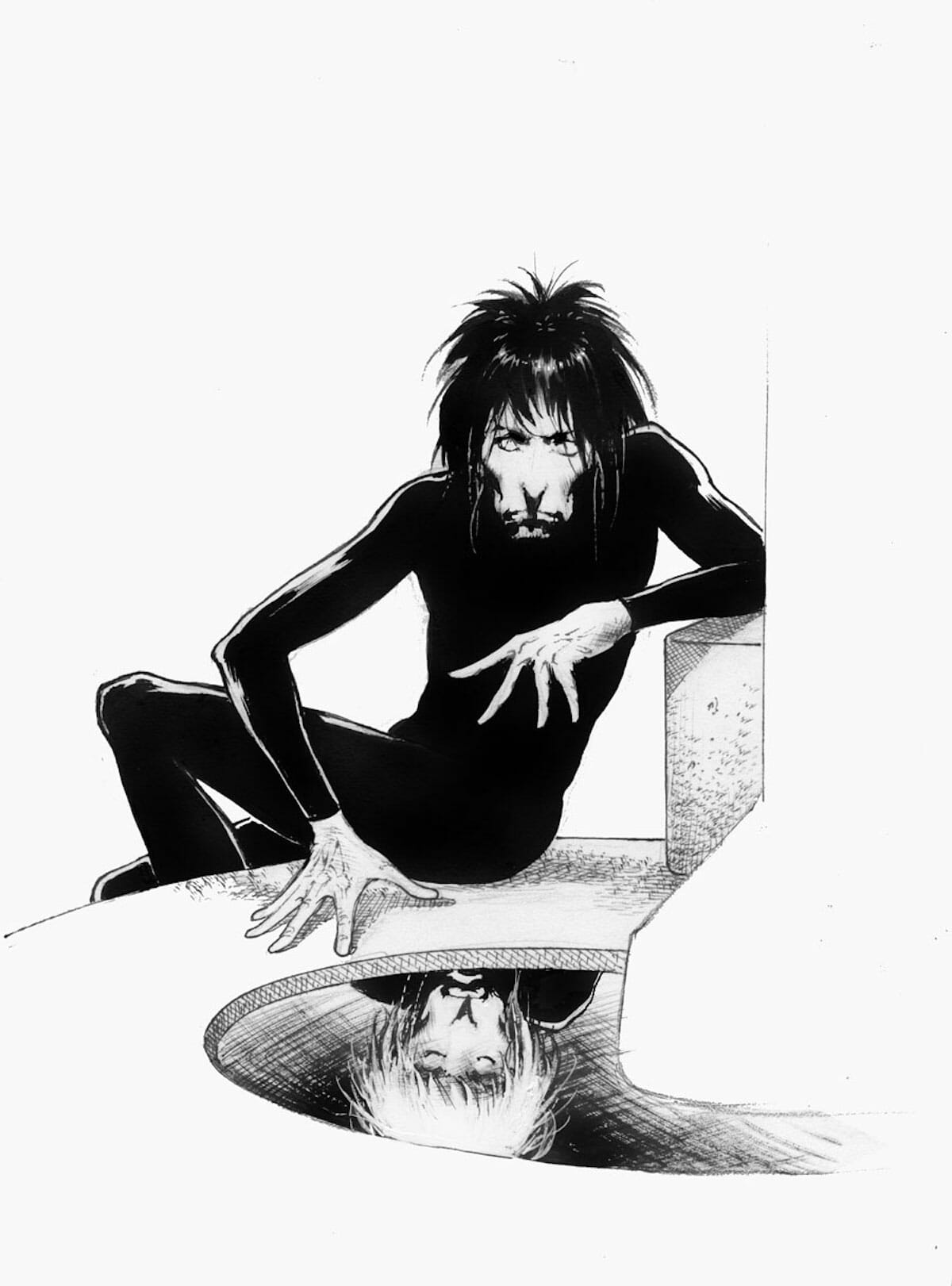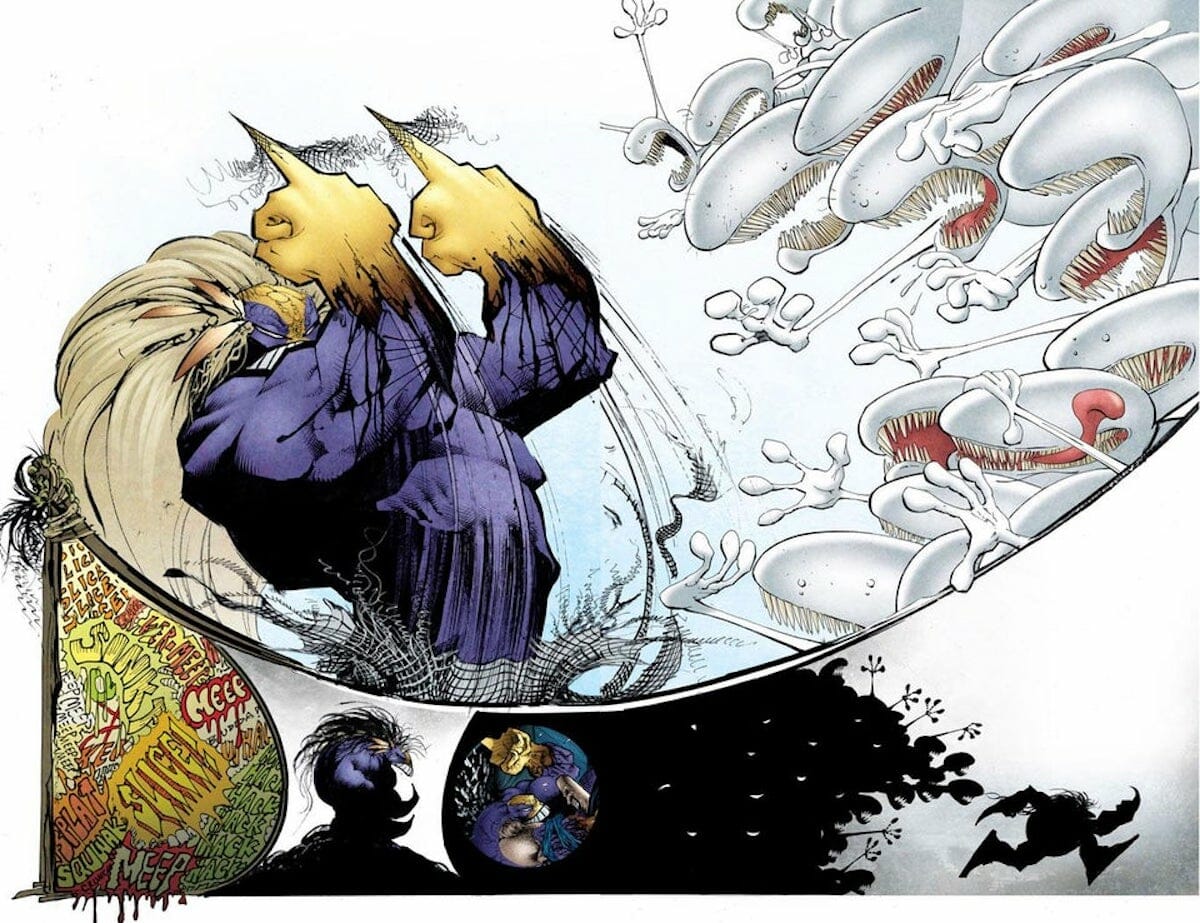The Nineties were a weird and wondrous time for many elements of pop culture, to say the least. Between Madonna’s bullet bra, the video for the Aphex Twin’s “Come to Daddy”, and Pogs, we all had a good decade or so to adjust to the various moods of the phantasmagoric zeitgeist. Luckily for comic fans of that period, one of the artists responsible for contributing to this bizarre maze of culture is Sam Kieth, original artist for Neil Gaiman’s Sandman, a whole host of superhero comics, and — perhaps most iconically — creator of The Maxx.
Kieth’s career began in the early 1980s as the inker on Matt Wagner’s charming superhero masturbation fantasy Mage, and, soon after, on Steve Moncuse’s cult self-published black and white comic Fish Police. One could say that Kieth finally got his due in 1989, when he collaborated with famed writer Neil Gaiman to pencil the first five issues of the seminal Sandman series. According to Kieth, this was a lucky break and — much to the twitchy chagrin of dozens of artists years later — Kieth was not really all that interested in the project as Gaiman saw it moving forward, and often felt “outclassed” by other artists on the series, including his replacement Mike Dringenberg, despite severely underestimating the impact that his design for main character Morpheus had in making the series so iconic for fans.
It’s no wonder that Kieth felt like the odd man out on the Sandman team, considering his artistic sensibilities. In an era that was strangely smooth and bulging in terms of its dominant visual stylings, Kieth’s work was much more eclectic, leaning into wildly disproportionate figures and an uninhibited treatment of inks that made his style something new and bold. This worked more than enough in his favor as he began illustrating on projects like The Incredible Hulk, Wolverine, dozens of covers for Marvel Comics Presents, and, outside of the superhero genre, William Messner-Loeb’s Epicurus the Sage. By the time he was creating Alien: Earth War with writer Mark Verheiden for Dark Horse, Kieth was already beginning to make a name for himself, but if readers were already growing impressed by Kieth’s work, it’s no wonder that the Cult of Kieth took off like a rocket when the creator launched a story of his very own creation for a change: The Maxx.
Starting in 1993 and lasting 35 issues, The Maxx follows the eponymous hero, Maxx, through his bizarre existence within two worlds: first as a homeless man living in a box whose social worker, Julie Winters, acts as Maxx’s confidante and bail fund help, and in The Outback, an alternate reality where Maxx is a powerful hero and protector of the beautiful Jungle Queen… who just happens to look like Julie Winters, clad in leopard skins. In both worlds, Maxx is seen as a hulking purple monster with massive feet and teeth, and giant yellow claws for hands; but though he looks a menace, in both worlds, Maxx wants nothing more than to help the people who need it most — even if that means changing reality.
Beyond its initial publication by Image Comics, The Maxx was also adapted into an animated series for MTV’s program Oddities, which covered the first eleven issues of the comic book series. Even now — almost three decades after it’s first time seeing print, and following its remastered reprint as The Maxx Maxximized from IDW Publishing a few years ago — the fandom for The Maxx carries on nearly as strong as ever, with new projects like a 2021 Maxx Calendar from Clover Press, and featuring new artwork by Kieth, being backed on Kickstarter right now.
What really makes The Maxx memorable for most audiences, however— whether from the comics or TV show — is that Kieth is able to conquer many difficult and delicate subjects such as rape, harassment, infatuation, and loss with few words. In a era of comics where many male creators enjoyed the thrill of adding an “edge” their stories by including tender subjects with somewhat indelicate handling — who can forget Shadowhawk, the superhero whose selling point was literally that he was dying of AIDS — Kieth handled them with little dialog and a heap of empathy and understanding through art and emotional intimacy. Themes of breaking down gender roles, questioning sexuality, and working through self esteem through a vision of psychedelic adventures and mishaps are common throughout many of Kieth’s work and — according to many interviews he had given earlier in his career — often reflect his own experiences with working through the minutia of life.
The idea of gender, sex, and self worth morph even further in later work, with titles such as Zero Girl for DC Comics’ early-2000s imprint Homage Comics, which sees protagonist Amy Smootster — a high school girl whose relationships with the world can be best summed up according to a never-identified liquid that seeps from her feet when she becomes ashamed — trying to hook up with her school guidance counselor Tim. While the subjects of the story may have been foreign, kooky, and strange to many readers, Kieth has since explained that much of the book was him working through his own adolescence, in which he started dating his wife, 20 years his senior, when he was just 15.
The same origin point can be glimpsed in other books such as Four Women, where friends have to reconcile with themselves how they’d allowed others to be hurt so that they won’t have to endure it. Along similar lines, Ojo and My Inner Bimbo — part of Kieth’s coined “Trout-a-verse” of stories of characters interlinked by an urban legend The Magic Trout — both cover subjects relating to getting in touch with the ever-mysterious feminine side of the male psyche, while exploring what exactly being a women is meant to be when the expectations are put under a looking glass.
Kieth’s career isn’t all one of torrid stories and painful stories of self-esteem, however; he also went on to write and draw several other comics for recognizable DC properties such as Batman: Secrets, as well as working on Lobo: Highway to Hell, written by Anthrax’s Scott Ian. Even that may seem like chump change compared to Arkham Asylum: Madness, a Batman graphic novel which Kieth wrote and illustrated, and which spent two weeks on the New York Times Bestseller List in 2010.
As much as there is a fanbase for his work and a whole host of readers who are still clamoring for this art like it’s 1995 — myself included — Kieth isn’t one for being in the limelight. Notoriously as kooky as his characters, he prefers to keep quiet and let fans continue to guess what his next project will be, which proved a welcome surprise in 2017 with AfterShock Comics releasing Eleanor and the Egret — a story of art their Eleanor and her reality-bending egret friend Ellis — from he and Chew author John Layman.
More than anything, fans have come to expect the unexpected from Kieth in more ways than one. For all that there is to try and parse out about the complexities of Kieth’s brand of storytelling, there’s just no better way to explain the appeal of his lore than how he said himself very earnestly in 2002:













































